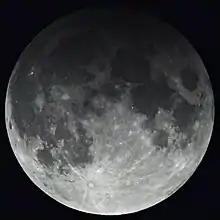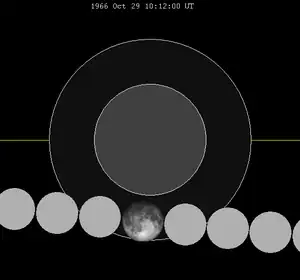
A penumbral lunar eclipse took place on Saturday, October 29, 1966, the second of two lunar eclipses in 1966. This was a deep penumbral eclipse, with over 90% within Penumbral Shadow.[1]
Visibility
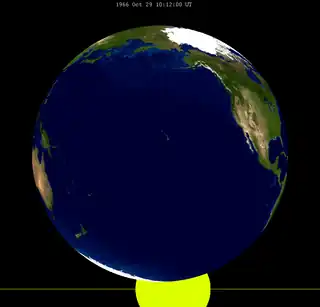
Related lunar eclipses
Lunar year series
| Lunar eclipse series sets from 1966–1969 | ||||||||
|---|---|---|---|---|---|---|---|---|
| Descending node | Ascending node | |||||||
| Saros | Date Viewing |
Type Chart |
Gamma | Saros | Date Viewing |
Type Chart |
Gamma | |
| 111 | 1966 May 4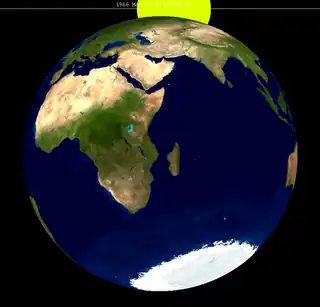 |
Penumbral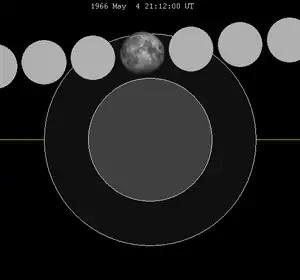 |
1.05536 | 116 | 1966 Oct 29 |
Penumbral |
−1.05999 | |
| 121 | 1967 Apr 24 |
Total |
0.29722 | 126 | 1967 Oct 18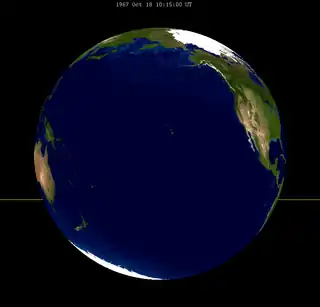 |
Total |
−0.36529 | |
| 131 | 1968 Apr 13 |
Total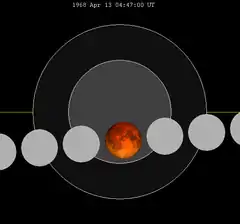 |
−0.41732 | 136 | 1968 Oct 6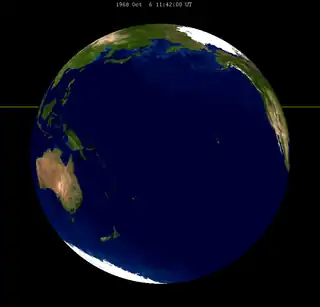 |
Total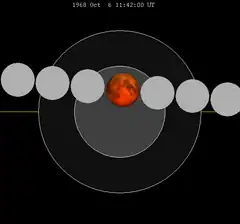 |
0.36054 | |
| 141 | 1969 Apr 2 |
Penumbral |
−1.17648 | 146 | 1969 Sep 25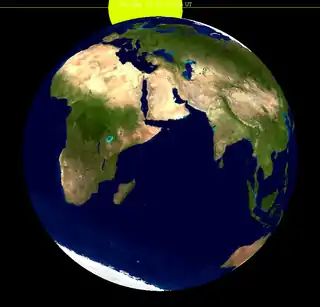 |
Penumbral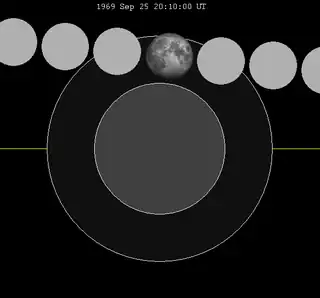 |
1.06558 | |
| Last set | 1965 Jun 14 | Last set | 1965 Dec 8 | |||||
| Next set | 1970 Feb 21 | Next set | 1969 Aug 27 | |||||
Metonic series
The metonic cycle repeats nearly exactly every 19 years and represents a Saros cycle plus one lunar year. Because it occurs on the same calendar date, the earth's shadow will in nearly the same location relative to the background stars.
| Metonic events: May 4 and October 28 | |
|---|---|
| Descending node | Ascending node |
|
|
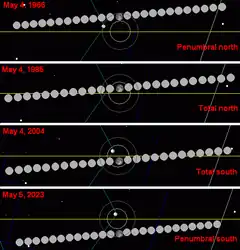 |
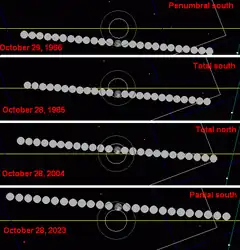 |
Half-Saros cycle
A lunar eclipse will be preceded and followed by solar eclipses by 9 years and 5.5 days (a half saros).[2] This lunar eclipse is related to two solar eclipses of Solar Saros 123.
| October 23, 1957 | November 3, 1975 |
|---|---|
 |
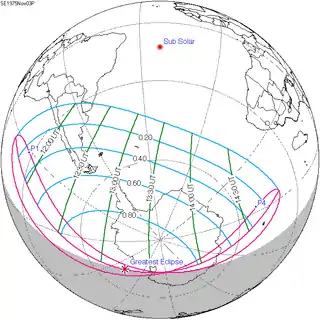 |
See also
Notes
- ↑ Hermit Eclipse: Saros cycle 116
- ↑ Mathematical Astronomy Morsels, Jean Meeus, p.110, Chapter 18, The half-saros
External links
- 1966 Oct 29 chart Eclipse Predictions by Fred Espenak, NASA/GSFC
This article is issued from Wikipedia. The text is licensed under Creative Commons - Attribution - Sharealike. Additional terms may apply for the media files.
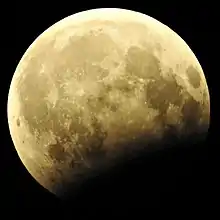
_(cropped).jpg.webp)
